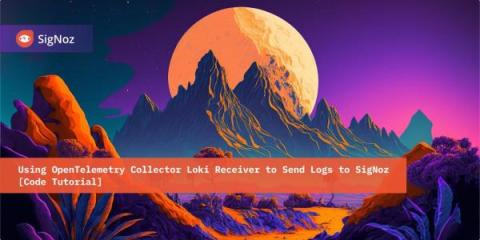Operations | Monitoring | ITSM | DevOps | Cloud
Logging
The latest News and Information on Log Management, Log Analytics and related technologies.
Open source log monitoring: The concise guide to Grafana Loki
Five years ago today, Grafana Loki was introduced to the world on the KubeconNA 2018 stage when David Kaltschmidt, now a Senior Director of Engineering at Grafana Labs, clicked the button to make the Loki repo public live in front of the sold-out crowd. At the time, Loki was a prototype: We bolted together Grafana as a UI, Cortex internals, and Prometheus labels to find out if there was a need for a new open source tool to manage logs.
Data Overload: Why Companies Collect Too Much Data and Pay the Price
In the US, a recurring news topic is the state of the federal budget – and if we’ll get one signed. Government budgets have hundreds of thousands of line items; each bickered over to gain or lose political capital with one group or another. However, most government budgets aren’t up for debate. Only about 30% of the US federal budget is discretionary or flexible. Nearly two-thirds, or 63%, is mandatory spending required due to prior commitments.
Cribl Search & Parquet Pushdowns - Smooth Like Butter!
Data is growing, and we are being asked to search larger and larger amounts of data. This puts larger and larger demands on Search resources. Reading all the data to find matching events is muscling through the data. Wouldn’t it be more efficient to be able to do filtering before reading the data? Cribl Search does precisely that by leveraging Parquet Pushdowns.
Using OpenTelemetry Collector Loki Receiver to Send Logs to SigNoz [Code Tutorial]
Observability Engineering: A Beginner's Guide
Fault Tolerance: What It Is & How To Build It
AWS re:Invent 2023 Recap
As we reflect on AWS re:Invent 2023, the Coralogix team is invigorated by the incredible response and feedback we received from the thousands of participants who visited our booth. It was clear that a recurring theme among companies is the need for an observability solution that not only scales affordably with increasing data volumes but is also at the forefront of innovation. Coralogix stands out as the ideal match for these requirements.
How To Guide: Connecting Cribl Search with the Azure API
In the ever-evolving world of data analysis, the ability to interact directly with live API endpoints is a significant advancement for practitioners. Cribl Search now offers this capability, enhancing your data analysis toolkit. This new feature allows you to gain broader visibility into the periphery of your infrastructure, enabling a more comprehensive analysis of user journeys and operational trends.









